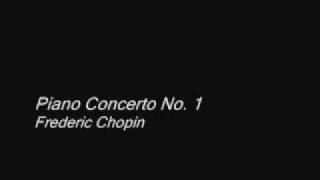Tuesday, 16 December, 2025г.
















Где искать: по сайтам Запорожской области, статьи, видео ролики
пример: покупка автомобиля в Запорожье
Mozart - Piano Concerto No. 24 in C minor, K. 491 [complete]
The Piano Concerto No. 24 in C minor, K. 491 is a concertante work for piano, or pianoforte, and orchestra by Wolfgang Amadeus Mozart. Mozart composed the concerto in the winter of 1785--1786 and completed the work on 24 March 1786. The premiere was on 7 April 1786 at the Burgtheater, Vienna. The concerto has the following three movements:
1. Allegro in C minor
2. Larghetto in E-flat major
3. Allegretto (Variations) in C minor
It is scored for flute, 2 oboes, 2 clarinets, 2 bassoons, 2 horns, 2 trumpets, timpani and strings. Of the Mozart piano concertos, this one has the most complete scoring. (It is the only one scored for both oboes and clarinets.) It is also the only late Mozart piano concerto in which the soloist plays after the cadenza in the first movement, here adorning an orchestral argument based on the extremely chromatic opening theme of the work with arpeggios, all the way through to the quiet close. It is one of only two minor-key piano concertos (the other being No. 20 in D Minor), and one of only three concertos where the first movement is in 3/4 time (the others being No. 11 and No. 14). The whole performance lasts roughly 30 minutes. The concerto has long been considered one of Mozart's greatest works. Arthur Hutchings has described it as the most "concerted" of all the concertos (i.e. the most integrated). Girdlestone has also effectively claimed it as the greatest. Ludwig van Beethoven took particular inspiration for his own music from this concerto. Richard Strauss played his own cadenza for the concerto in 1885. The work has obvious musical antecedents in Joseph Haydn's Symphony No. 78, also in C minor and from which the Concerto's opening statement is drawn. Jonathan Stock has analysed in detail Mozart's use of woodwind timbre in the instrumentation of the concerto's slow movement. Chris Goertzen has mapped the structure of the slow movement. The concerto was first published in parts in 1800. The manuscript of the concerto resides at the Royal College of Music.
-----------------------------------------------------------------------------
FREE .mp3 and .wav files of all Mozart's music at: http://www.mozart-archiv.de/
FREE sheet music scores of any Mozart piece at: http://dme.mozarteum.at/DME/nma/start.php?l=2
ALSO check out these cool sites: http://musopen.org/
and http://imslp.org/wiki/
-------------------------------------------------------------------------
NOTE: I do not know who the performers of this are, nor the place and date of recording!!! Any suggestions are welcome.
-------------------------------------------------------------------------------
ENJOY!!!! :D
Теги:
Wolfgang Amadeus Mozart Piano Keyboard Fortepiano Harpsichord Keys Clavichord Klavier Clavier Concerto Concert No._24 no24 cminor C_minor C minor 491 k.491 k491 kv491 classical music piano orchestra Am4d3usM0z4rt mozarthq Classical Music C Minor Beethoven Haydn
Похожие видео
Мой аккаунт


![Mozart - Piano Concerto No. 24 in C minor, K. 491 [complete]](https://pic.portall.zp.ua/mq/6/d4/2J0WLhDY5RDite.jpg) У вашего броузера проблема в совместимости с HTML5
У вашего броузера проблема в совместимости с HTML5![Mozart - Piano Concerto No. 22 in E flat, K. 482 [complete]](/images/mq/4/96/fxI3JRgg58hga9.jpg)

![Mozart - Piano Concerto No. 14 in E flat, K. 449 [complete]](/images/mq/9/3b/fdTEQUio9U6Ke4.jpg)
